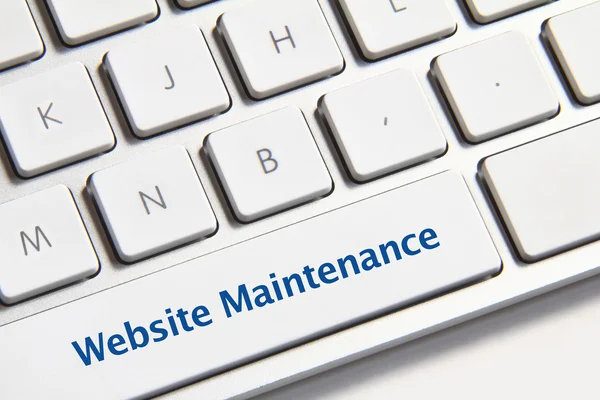Website maintenance should be a top priority for any company that utilizes a website as a core component of their business. Not only does regular maintenance ensure maximum efficiency, but it also helps protect the time and money invested in your website.
After all, you wouldn’t skip oil changes and 30,000-mile checkups for your car. You need your car to get you from Point A to Point B, and also to do it safely. So why would you risk performance and security issues for a key component of your business?
Website Maintenance Tips
This list of tips provides a basic guideline of what we feel every site should do on a regular basis. Please note, this does not cover things such as content audits, SEO audits, or other marketing tasks. While those should also done regularly, they don’t fall under the same scope of website maintenance. Those aspects generally are under the digital marketing umbrella, while web maintenance is under web development.

1. Schedule Regular Reviews
At the very least your site should be reviewed and tested annually and after any updates. Quarterly is a much more ideal schedule, as things change rapidly in the online landscape. You should looked the entire site carefully with every element tested. You might find content errors, broken links, features that are not loading properly, issues with load time, typos, and more. A focus should be placed on the user experience during these reviews, acting as if you are a customer to make sure you see the site through their eyes. You should review every single page. Do not forget to ensure the site meets accessibility standards for people with disabilities as well.
2. Test Device Compatibility Semi-Annually
Over time there are shifts in both devices and browsers. This can cause compatibility issues with websites. Therefore, it is a good idea to test your site on the newest mobile devices and tablets along with Google Chrome, Internet Explorer, Firefox, and Apple Safari.
3. Test All Critical Contact Points Quarterly
Every contact point should be carefully tested on a quarterly basis as well as after an update. That means all forms, CTA’s, and elements of the checkout process (if applicable) should be verified. Take the time to enter information incorrectly and create user errors to confirm the proper follow-up actions take place.
4. Check Website Backups Quarterly
While some might recommend checking backups on an annual basis, most sites can change quite a bit in a short time which is why quarterly backups are a much better idea. This will minimize potential data loss in the case of a catastrophic event.
5. Review Analytics Monthly
The reason analytics should be looked at on a monthly schedule is for proper performance review. Measuring key performance indicators (KPIs), looking at SEO rankings, and analyzing reports not only shows the effectiveness of a site but also helps to pinpoint problems or potential problems. When done monthly, possible errors can more quickly be confirmed and resolved along with better benchmarks for future changes.
6. Perform A Security Check Monthly
Software should be updated and installed including security patches, bug fixes, and any other updates that are related to the web server, database, operating system, CMS, and connected applications. While it is always best to install patches when released, at least any that are overlooked will be caught when performing a complete check monthly. This tip is important to keep your site protected from attacks.
7. Review Contact Information Monthly
Surprisingly, many websites have out of date contact information such as old phone numbers, old physical locations, or outdated team information. Your website is a portal of information and should be accurate so that if a customer or potential customer wants to contact you, they easily can.
8. Update Copyright Notices Annually
Typically sites post one copyright date across an entire site. This is done to clarify that content on that page and site are protected by copyright laws (at least in the United States). Generally, the copyright symbol is added along with the date of creation, but as websites are updated regularly it makes sense to also update the copyright date as well.
9. Review Legal Disclaimers Annually
Each year the website’s privacy policy, site terms, conditions of use, terms or sale, and any other disclaimers. The reason is to ensure they are compliant with current policies and laws to protect your online activities.
Conclusion.
A business website is a tool and as such should always be in the best condition possible. The way to ensure that happens is by following these website maintenance tips every business should know. Much like proper auto maintenance keeps your car running smoothly, regular website maintenance keeps your business running effectively.

Read more Blogs
Learn more about us. Feel free to contact us.
Source: https://www.loungelizard.com/


